Microsoft Surface Pro (2017)
Did you know the 2017 Surface Pro isn’t the newest Surface on the block? Read our review of the Microsoft Surface Pro X, Microsoft’s most recent Surface release.
The Microsoft Surface Pro 2017 is still among the best Windows tablets around. By building upon the key features that made the much-adored Surface Pro 4 and other premium Windows tablets so popular, the Microsoft Surface Pro 2017 carries on the legacy of the Surface Pro line.
That’s while also bringing its own strengths to the table. The Microsoft Surface Pro 2017 boasts ingenious design updates that have proven to be future-proof. It’s also helped demonstrate that Windows 10 is much more capable than many perceive it to be.
Both the Surface Pro 6 and Surface Pro 7 have unfortunately failed to offer the generational leap many have been anticipating. So, almost three years after its release and even in the shadows of its successors, the Microsoft Surface Pro 2017 remains to be an impressive tablet and a compelling purchase for Windows 10 laptop users. Even with its numbers dwindling, it’s still worth scouring the Internet for.
Spec Sheet
Here is the Surface Pro 5 configuration sent to TechRadar for review:
CPU: 2.5GHz Intel Core i7-7660U (dual-core, 4MB cache, up to 4GHz with Turbo Boost)
Graphics: Intel Iris Plus Graphics 640
RAM: 16GB LPDDR3
Screen: 12.3-inch, 2,736 x 1,824 PixelSense display (Contrast ratio: 1,300:1, 100% sRGB color, 10-point multi-touch, 3:2 aspect ratio)
Storage: 512GB SSD (PCIe 3.0)
Ports: 1x USB 3.0, mini DisplayPort, microSDXC card reader (UHS-I), headphone/mic jack
Connectivity: 802.11ac Wi-Fi (2 x 2 MIMO), Bluetooth 4.1 (Low Energy)
Cameras: 8MP rear-facing, auto-focus camera (1080p HD); 5MP front-facing, 1080p HD camera
Weight: 1.73 pounds
Size: 11.5 x 7.93 x 0.33 inches (W x D x H)
Pricing and availability
Even following the release of the Microsoft Surface Pro 7, Microsoft hasn’t officially drop the prices for the Microsoft Surface Pro 2017 in the Microsoft online store. However, Amazon and other third-party sellers are offering excellent discounts, which you bring you massive savings if you’re opting for this Surface Pro model.
Staying in line with previous models of the Surface, the Microsoft Surface Pro 2017 starts at $749 (£749, AU$1,129), and the price goes up from there. For that entry-level price, you’re taking home a device packing a Kaby Lake Intel Core m3 processor, 4GB of memory and 128GB of SSD storage.
This base configuration should be adequate enough for users who don’t really do demanding computing tasks. However, if you have a workload like ours, that’s hardly sufficient power to get the job done. If that is the case, we recommend going with a Surface Pro configuration with at least an Intel Core i5 processor, more RAM and SSD space.
In the US, the Surface Pro 5 maxes out at $1,449. Splurging that much will get an Intel Core i5 processor with 256GB SSD and 8GB of RAM. This configuration should power you through most of your productivity tasks without too much hassle, though we’d be careful about filling up your SSD with too many photos and videos.
At the moment, a configuration equipped with an Intel Core i7 chip is not available in the US, unless you’re buying it from Amazon, which still offers more configurations and at discounted prices at that. It is, however, available for purchase in the UK, with the 256GB SSD and 8GB RAM priced at £1,119, and the more powerful 1TB SSD and 16GB RAM setting you back a substantial £1,611.
Put up against some of the Surface Pro 5’s competitors, like the latest iPad Pro 11-inch, Apple start things off at $799 (£769, AU$1,229) for a tablet with Apple’s A12X Bionic processor and 64GB of SSD storage. Meanwhile, the maxed-out version retails for $1,549 (£1,519, AU$2,349) with 1TB of space and the same processor.
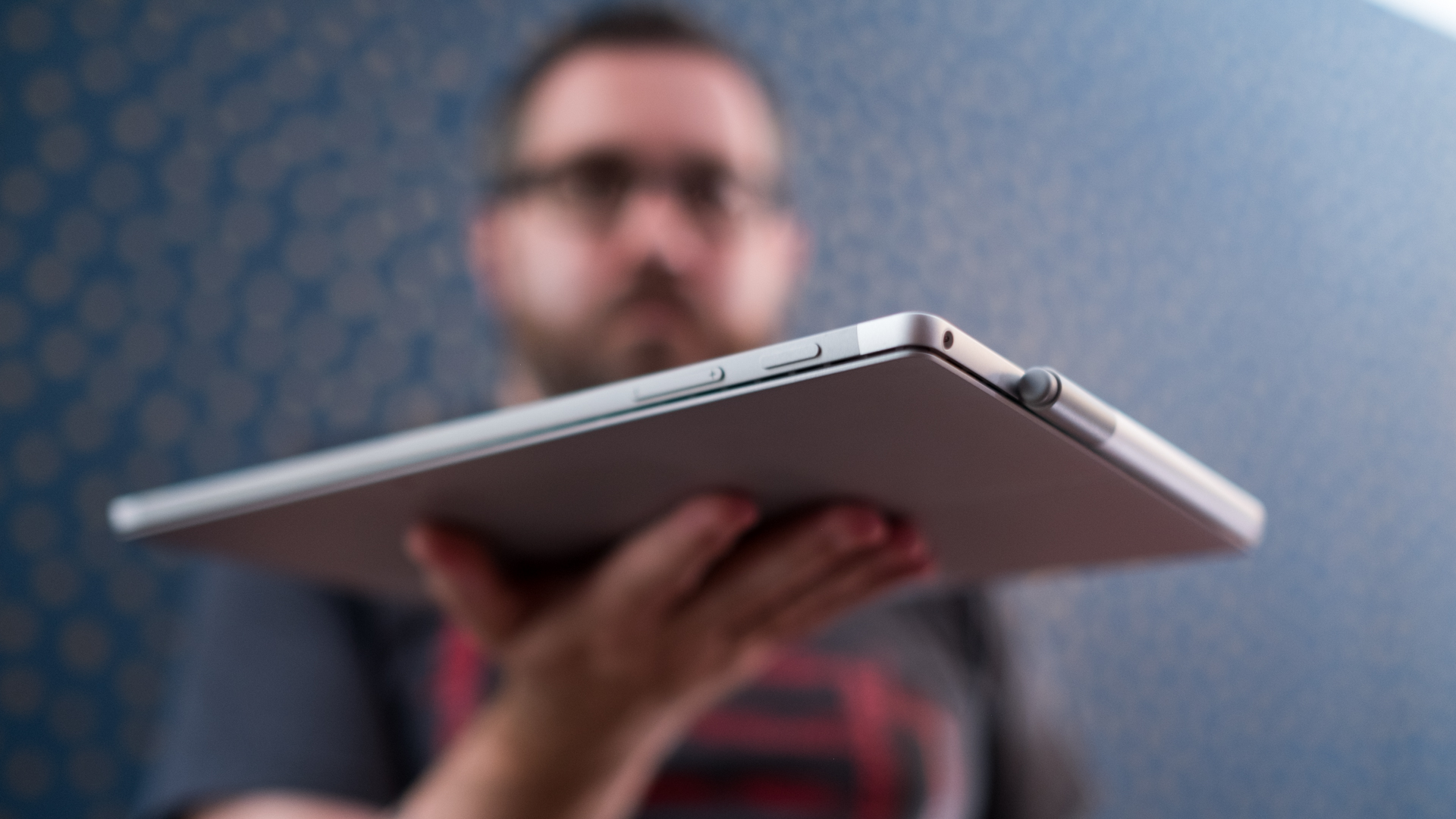
The Samsung Galaxy Book 2, alternatively, starts at $999 (about £780, A$1,440) for the 12-inch configuration with a 128GB SSD and 4GB of RAM powered by a Qualcomm SDM850 processor. This model is, sadly, unavailable in the UK and Australia.
Both the 10.6-inch and 12-inch Samsung Galaxy Book machines are on hand in the UK, but currently, these are only available to buy through third-party retailers. In the US, the 12-inch version, equipped with a 7th Gen Intel Core i5 processor, 4GB RAM and 128GB SSD, is pricier at $1,299 (about £1,020, A$1,873).
When you take into consideration that the new Surface Pro is sold sans the Type Cover or Surface Pen in the box, Samsung’s tablet begins to look like a much more appealing purchase than both the Surface Pro and accessory-challenged iPad Pro. So, it is unfortunate that neither its performance nor its design is especially impressive.
While Microsoft not including the Surface Pen out of the box seems to indicate that the Microsoft Surface Pro 2017 costs more to make than its forerunner, a unit purchased with both the Pen and Type Cover would exceed the price of an equivalent Galaxy Book by only $100. Still, we’d love to see the pen included in the initial purchase.
Bear in mind, though, that while the Microsoft Surface Pro 2017 is still available for purchase, it has been succeeded by the newer Surface Pro 6. That means that you should be able to find it for significantly less than list price.
- Need to save some cash? We've tracked down the best Surface Pro deals
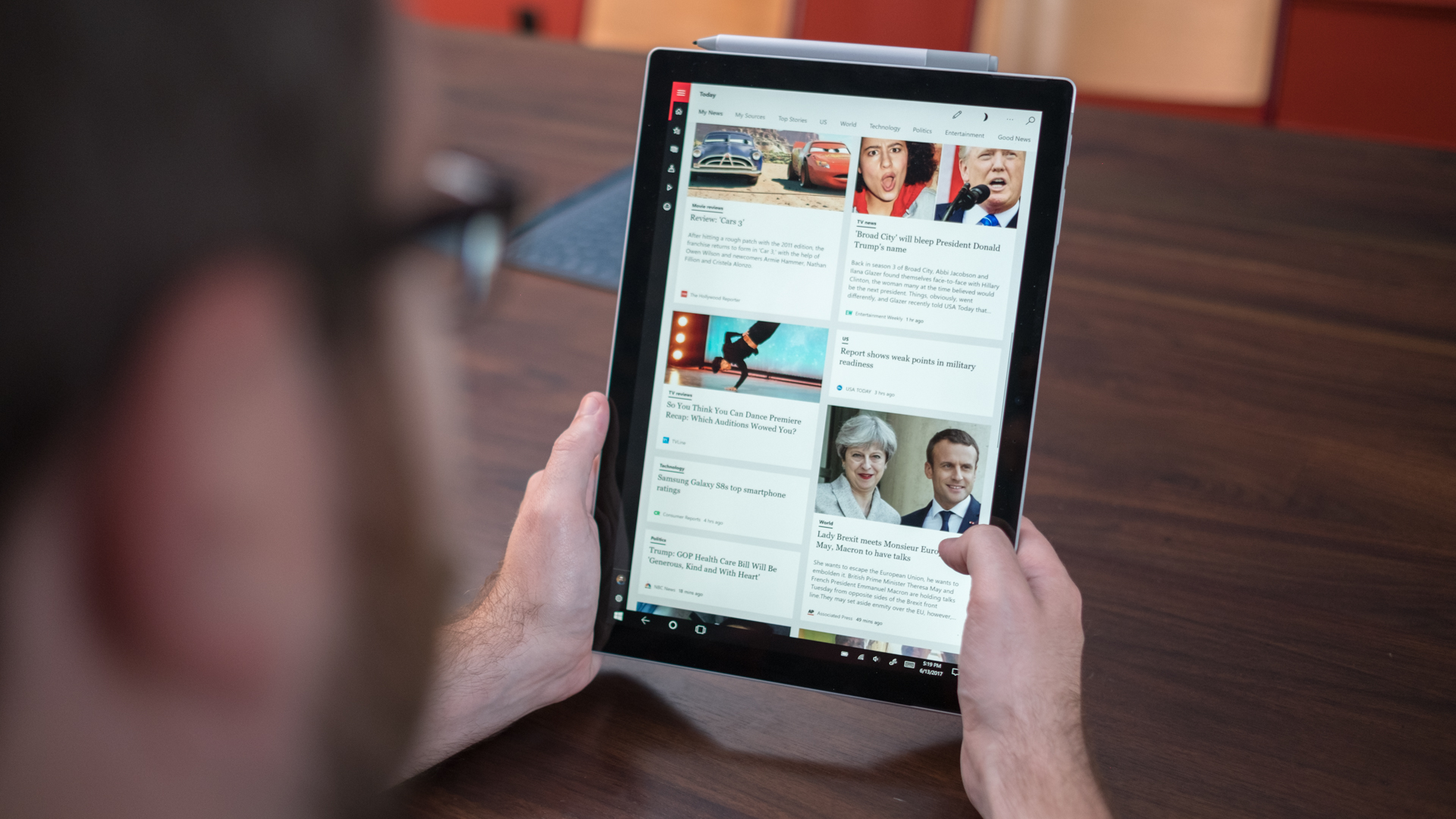
Design
At first glance, the 2017 Surface Pro 5 closely resembles the Surface Pro 4. It has the same stunning 12.3-inch PixelSense touch display with a 2,736 x 1,824 pixel resolution.
However, a closer look uncovers a few key distinctions. For one, the magnesium-aluminum alloy frame is considerably rounder at the edges. If you were a Surface Pro 4 user before going for the Microsoft Surface Pro 2017, your fingers may even feel the difference before your eyes see them.
There’s also the hinge, which has been made that much better on the Surface Pro 5, taking cues from the Surface Studio. The hinge now bends back further than ever before, thanks to a new “Studio mode” that makes for a narrower, 165-degree angle that’s ideal for artists. To that end, the hinge looks especially different, obviously utilizing new parts to make this more dramatic angle possible. It does, however, operate in exactly the same way.
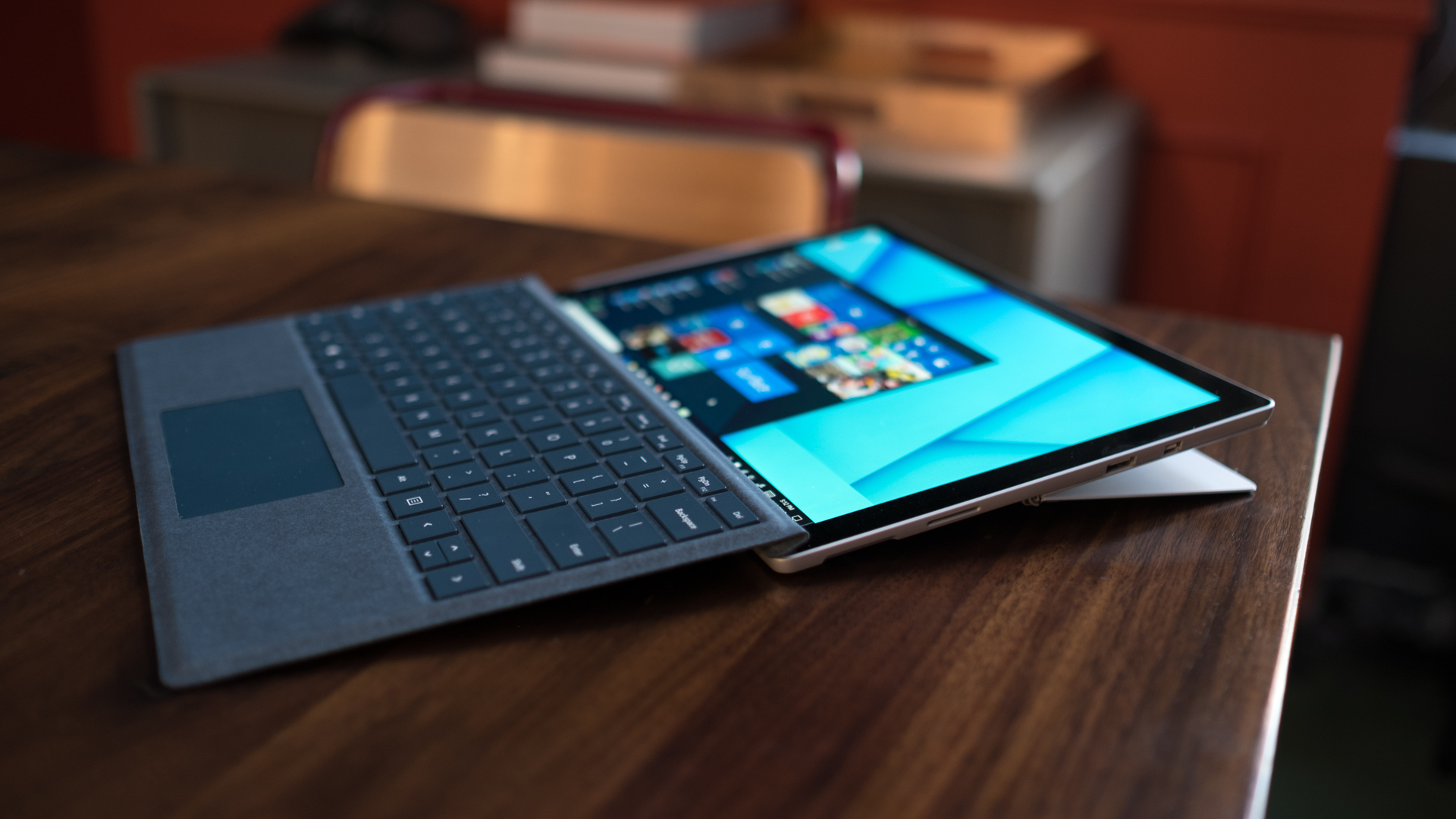
Another change worth noting here is the thermal design, which Microsoft also improved, making both the Core i5 and Core m3 versions fanless devices.
The new Alcantara Type Cover is a notable upgrade in comfort over the previous generation, and it’s undeniably worth the slight upcharge in asking price over the microfiber cloth version. The keys feel like they’re deeper set and bouncier than ever coming back from a press. Plus, the material looks like it’s robust enough to last for a long time. Those who want to stay away from neutral colors will be happy to know that burgundy and cobalt blue colors are now also on hand.
At the end of the day, the Microsoft Surface Pro 2017 measures at the same 0.33 inches (8.4mm) of thickness as its precursor, with its weight of 1.73 lbs (786g) also the same as before. Considering that Microsoft managed this while still improving battery life by up to 20%, this is quite a notable feat, indeed.
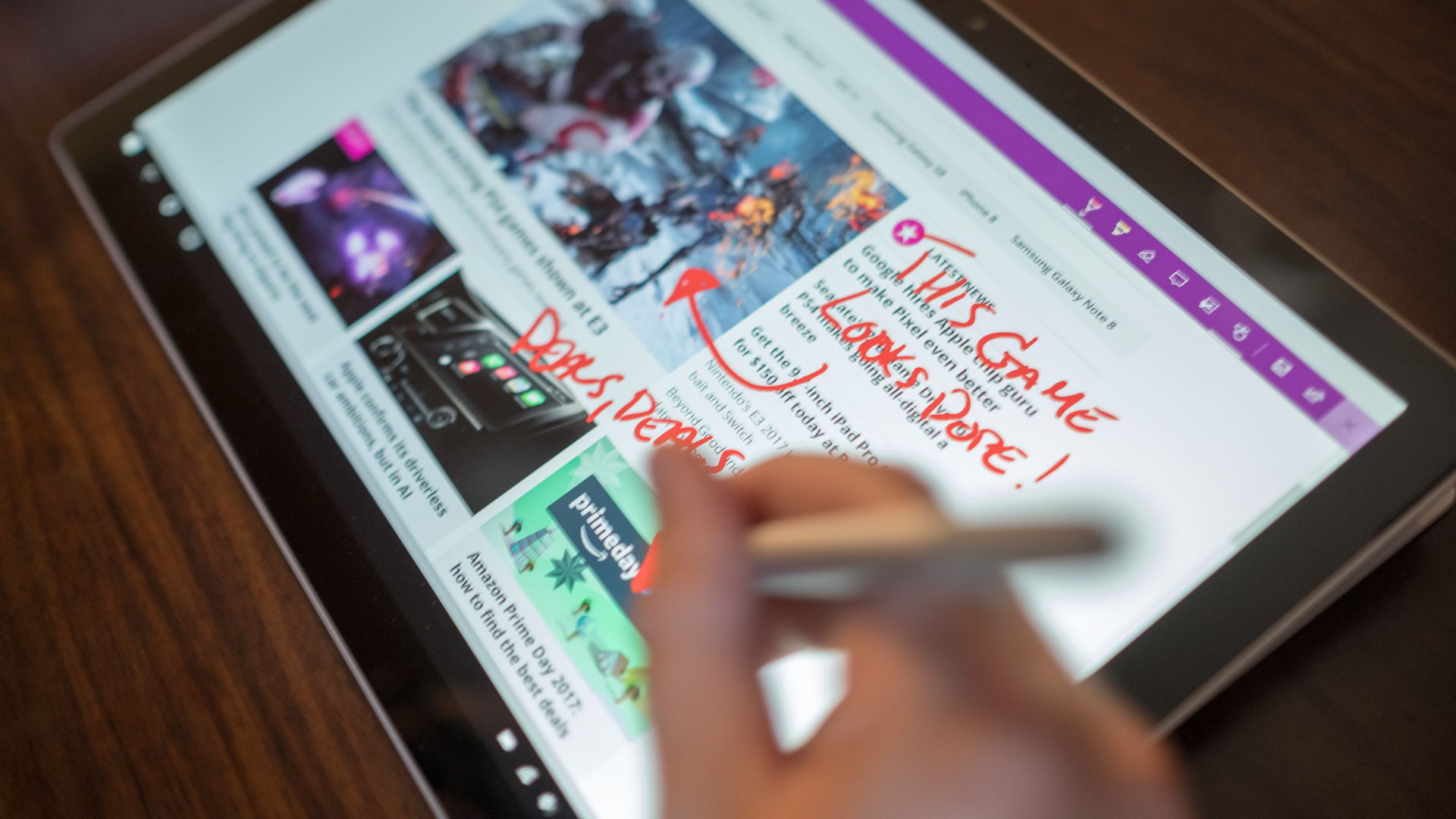
Surface Pen gets a big boost
Why the Microsoft Surface Pro 2017 wasn’t given the ‘5’ moniker – even though it was followed up by the Surface Pro 6 – is beyond us, particularly when you take into account the fact that it received pretty substantial changes. It is, however, the Surface Pen that got some of the most meticulous and belabored changes.
To begin, Microsoft has improved the pressure sensitivity of the Surface Pen to 4,096 levels, giving creators more control over the width and intensity of their lines in designs and illustrations than ever before. Additionally, the Surface Pen now has lower latency, so its tip has a far lower chance of ‘leading’ the ink on the PixelSense screen.
The Pen now supports tilt detection, though only through the new Surface Pro 5 and Surface Book 2. The other available Surface devices will get the support for this feature through a firmware update later on. This feature will – short of some useful navigation controls in some apps – mostly matter to true creators who are most worried about representing tilt and direction of the strokes in their work.
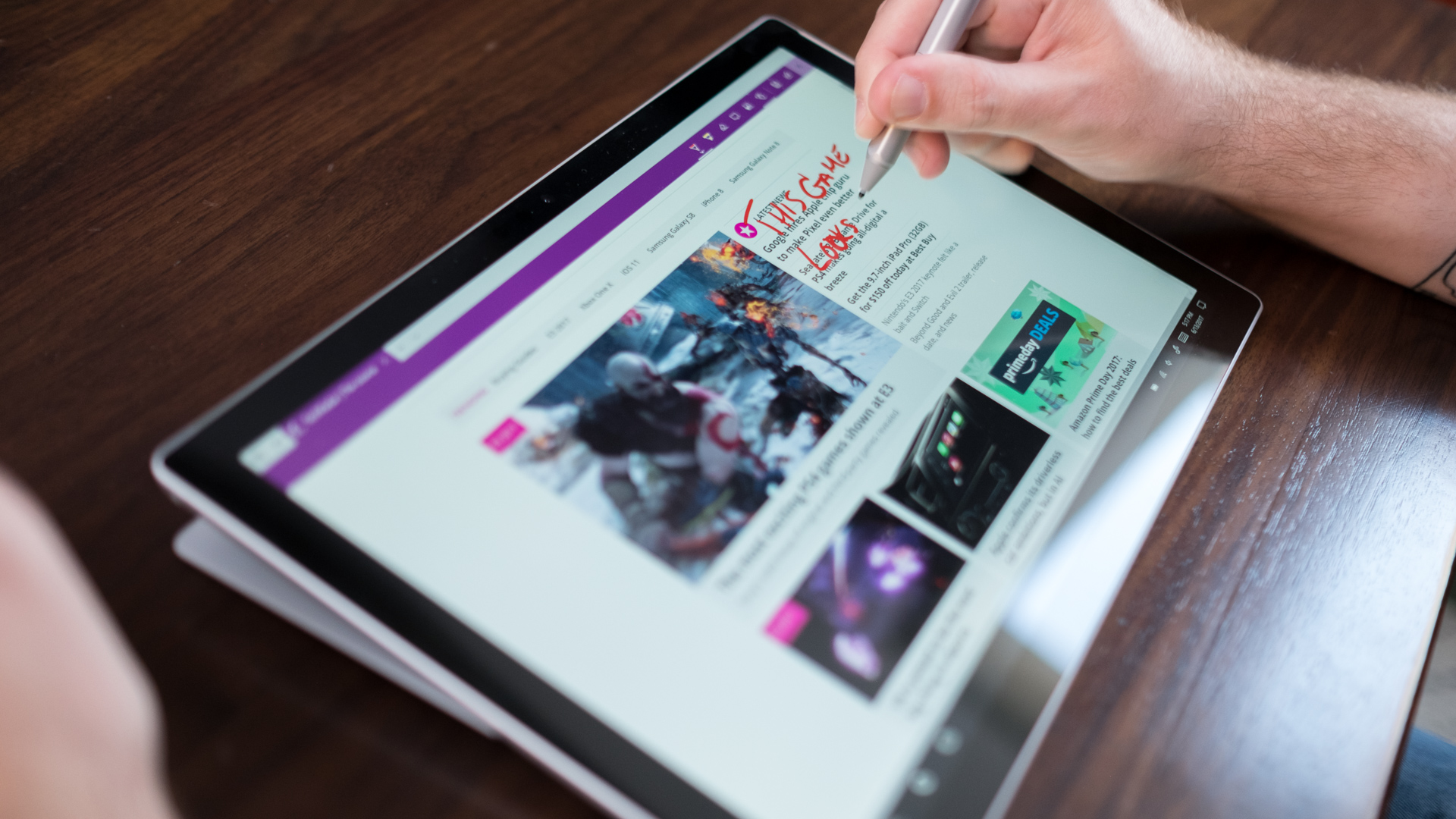
Another thing that’s new here is that the Pen is available in new appealing colors: platinum, black, cobalt blue and burgundy, meant clearly to match the available colors of new Type Covers.
There’s no question that both the new Surface Pen and Type Cover are well-deserving of their small price hikes. However, we’re still disappointed by the lack of bundles to save loyal customers some money for fully buying in on Microsoft’s products since day one.
First reviewed June 2017
Images Credit: TechRadar
Benchmarks
Here’s how the Surface Pro performed in our suite of benchmark tests:
3DMark Sky Diver: 6,431; Time Spy: 607; Fire Strike: 1,342
Cinebench CPU: 414 points; Graphics: 68 fps
Geekbench 4 Single-Core: 4,656; Multi-Core: 9,296
PCMark 8 Home: 2,874 points
PCMark 8 Battery Life: 4 hours and 3 minutes
TechRadar Battery Life Test: 6 hours and 58 minutes
Not surprisingly, the new Surface Pro 5 performs extremely well when handling every task in this editor’s workload. That includes web browsing with multiple tabs open at a time, word processing, and downloading and uploading lots of media files. Additionally, it performs more than adequately for light photo editing through Lightroom.
As for gaming, anything beyond indies or tablet-friendly games is most likely going to result in a poor, choppy experience, which is to be expected. However, touch-friendly games, like Hearthstone, are simply pleasurable to play on the sharp and vibrant 12.3-inch screen.
Of course, with media creation being the main reason of this device, the 3:2 display will make for larger black boxes than you might be used to when watching 16:9 and 21:9 video content.
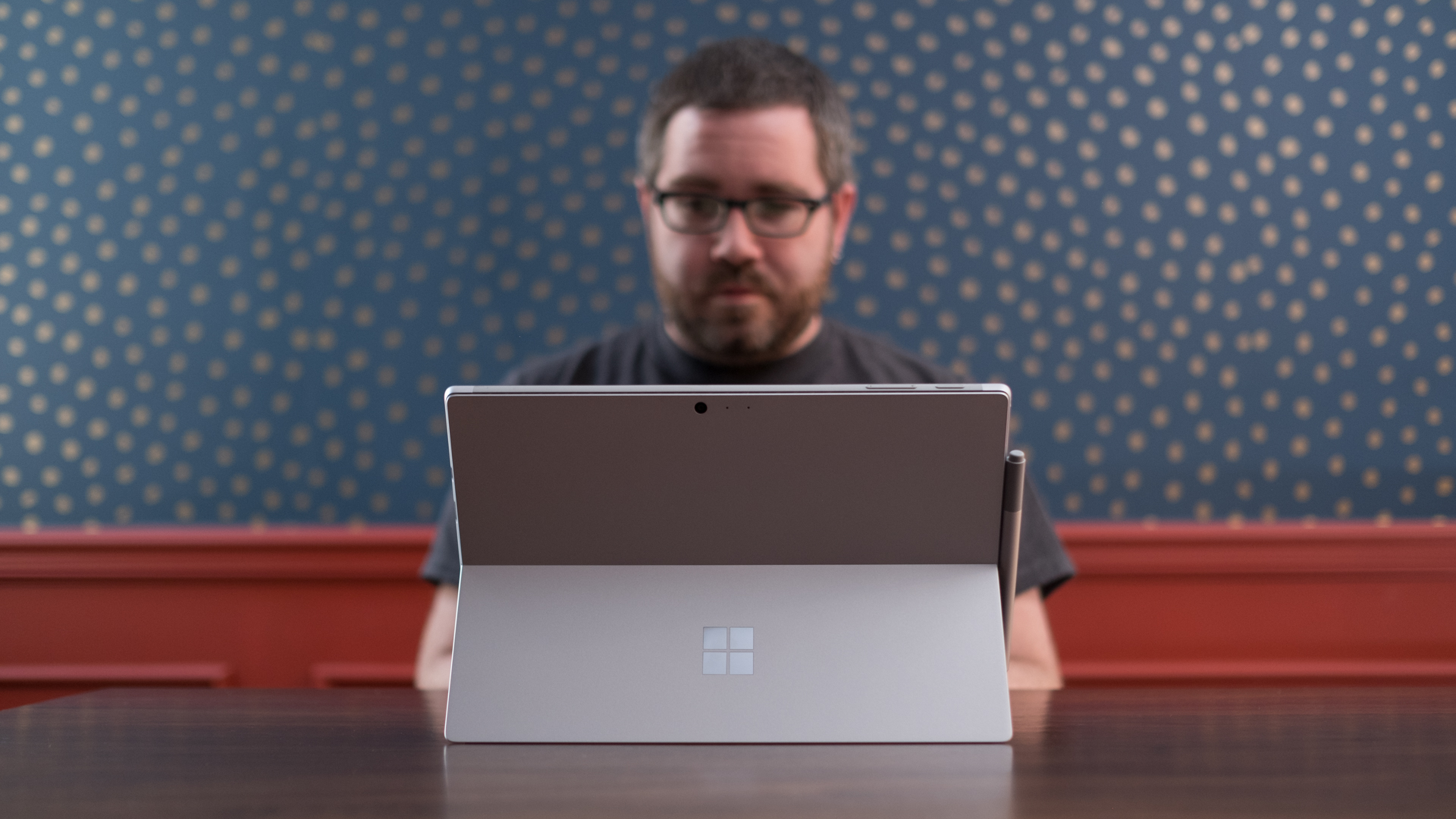
On the benchmarks, the new Surface Pro 5 is on par with the latest iPad Pro on Geekbench 4, one of the few tests that can measure both systems. The Surface Pro’s average multi-core processor score of 9,296 is within spitting distance of the iPad Pro’s 9,290-point ranking.
Keep in mind that this is the Surface Pro with a 2.4GHz Intel Core i7 processor, the most powerful version of the chip that it can be configured with. On the other hand, the iPad Pro is just as powerful no matter which configuration or model you go with. (Oh, and we’ll just say the Galaxy Book we reviewed doesn’t hold up to this configuration.)
Though to be fair to the Surface Pro, its Ultrabook-grade processor powers a deliberately more comprehensive PC experience, with an operating system that lets you to download apps from multiple sources and dig into system files deeper – things that the iOS 12 hasn’t been able to do.
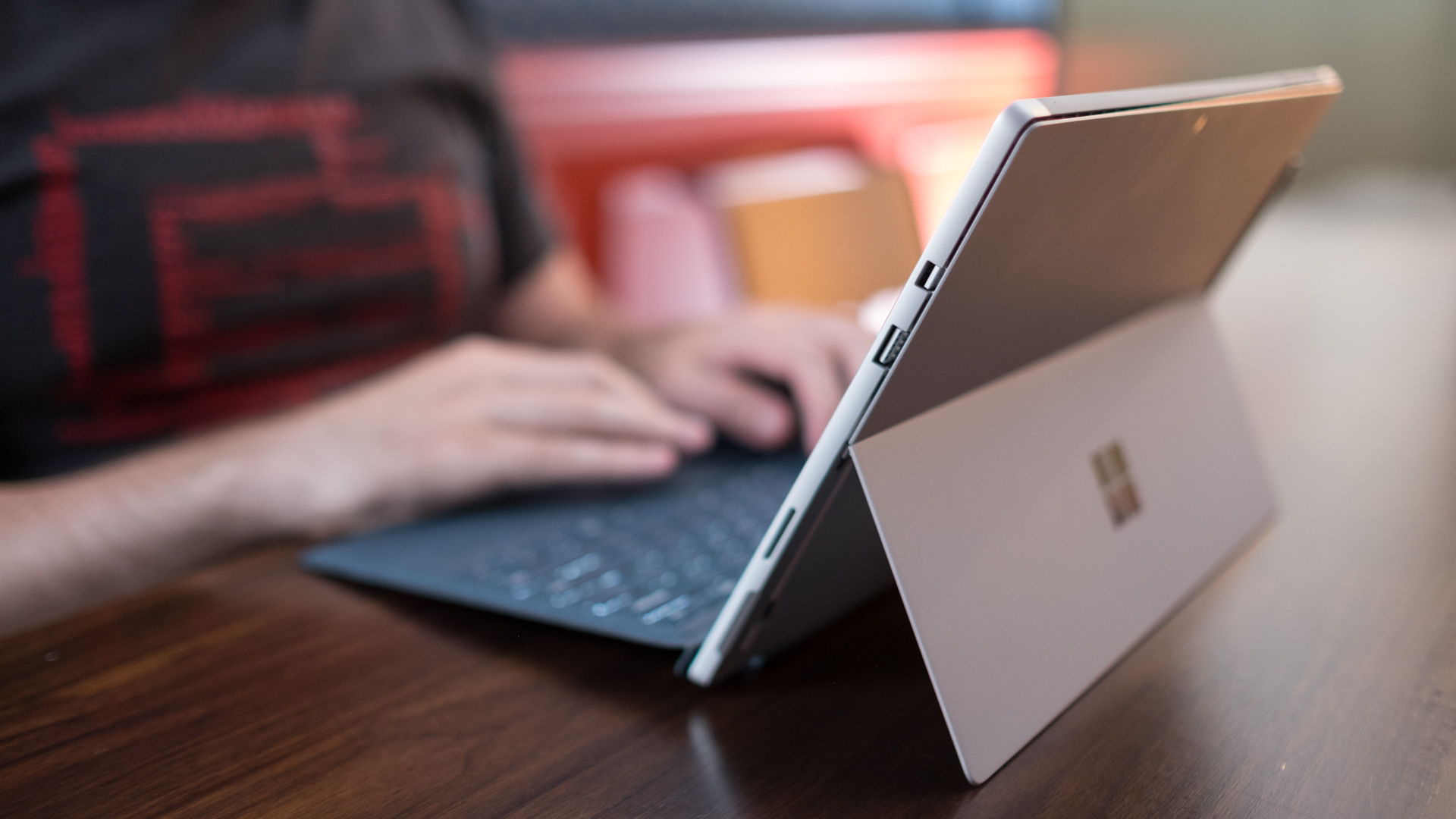
Battery life
One aspect that Microsoft has improved on every year that the competing MacBook and iPad Pro refreshes have not is battery life. With the Surface Pro 2019, the firm was able to shrink its motherboard design, making space for a 20% bigger battery inside.
Paired with power consumption optimizations that the 7th generation (Kaby Lake) Intel processor design delivers, Microsoft is promising up to 13 hours and 30 minutes of local video playback from the new Surface Pro.
That’s a lofty claim that, unfortunately, doesn’t hold up in our tests. That’s not really surprising since this has been the case with its previous products, much less all of its rivals.
The advantage, though, is that, based on our tests on the earlier model’s battery, we definitely see a perceptible improvement. PCMark 8 Battery Life and TechRadar Movie Test resulted in 24% and 32% longer running times than the previous model at 4 hours and 3 minutes, and 6 hours and 58 minutes, respectively.
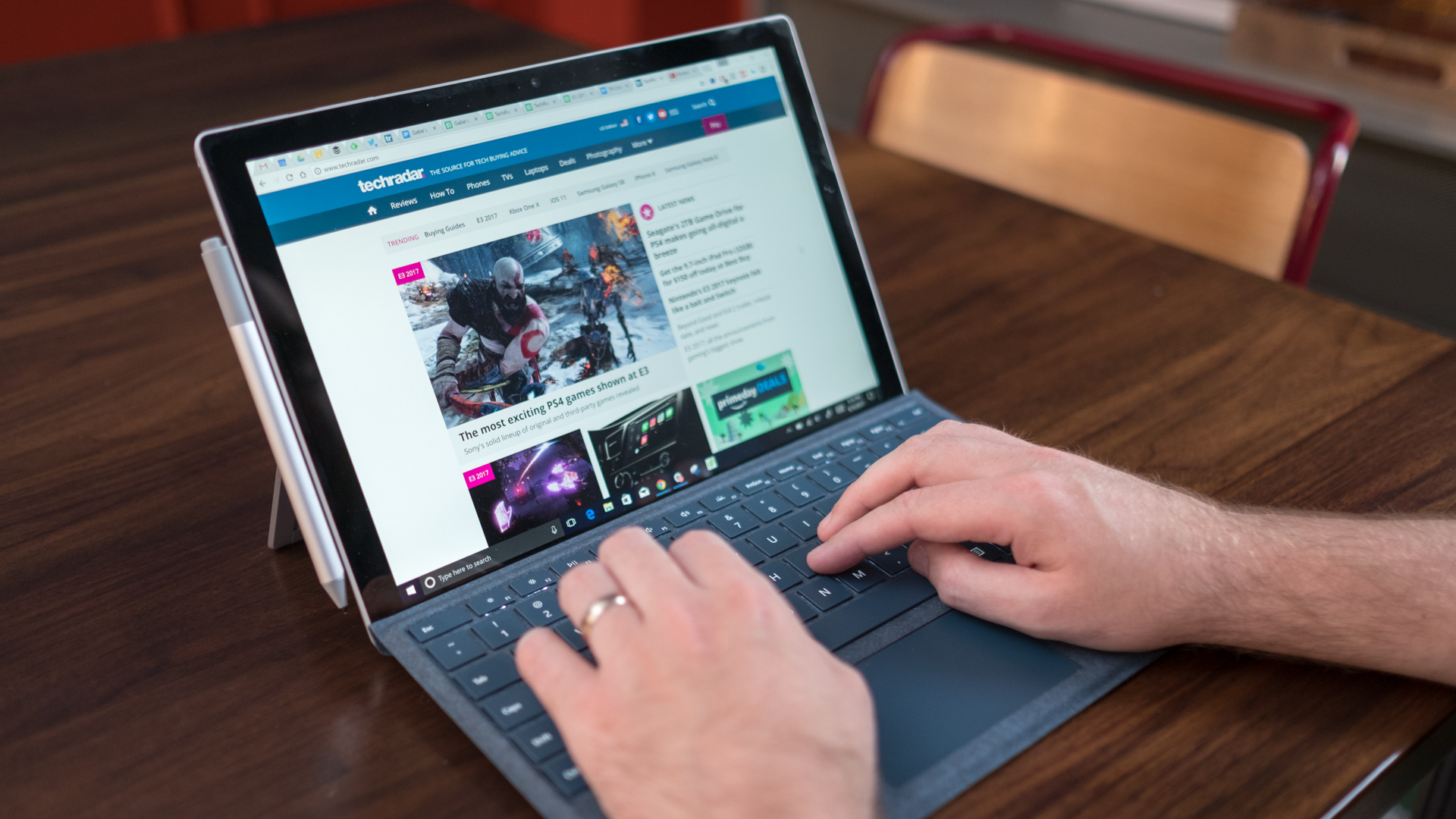
In the meantime, the iPad Pro was assessed for between 6 and 7 hours of use, and the Galaxy Book lasted longer at 7 hours and 32 minutes playing back local video yet ran nearly an hour shorter in the more demanding PCMark 8 test.
These numbers are lower than what Microsoft claimed, but again that’s not too surprising. The point is that we’re seeing considerable improvements based on our own results, and that’s enough for us to praise Microsoft’s team of engineers and designers for getting the job done. You shouldn’t have to carry the Surface Pro charger with you everywhere you go, and they’re getting closer to that goal.
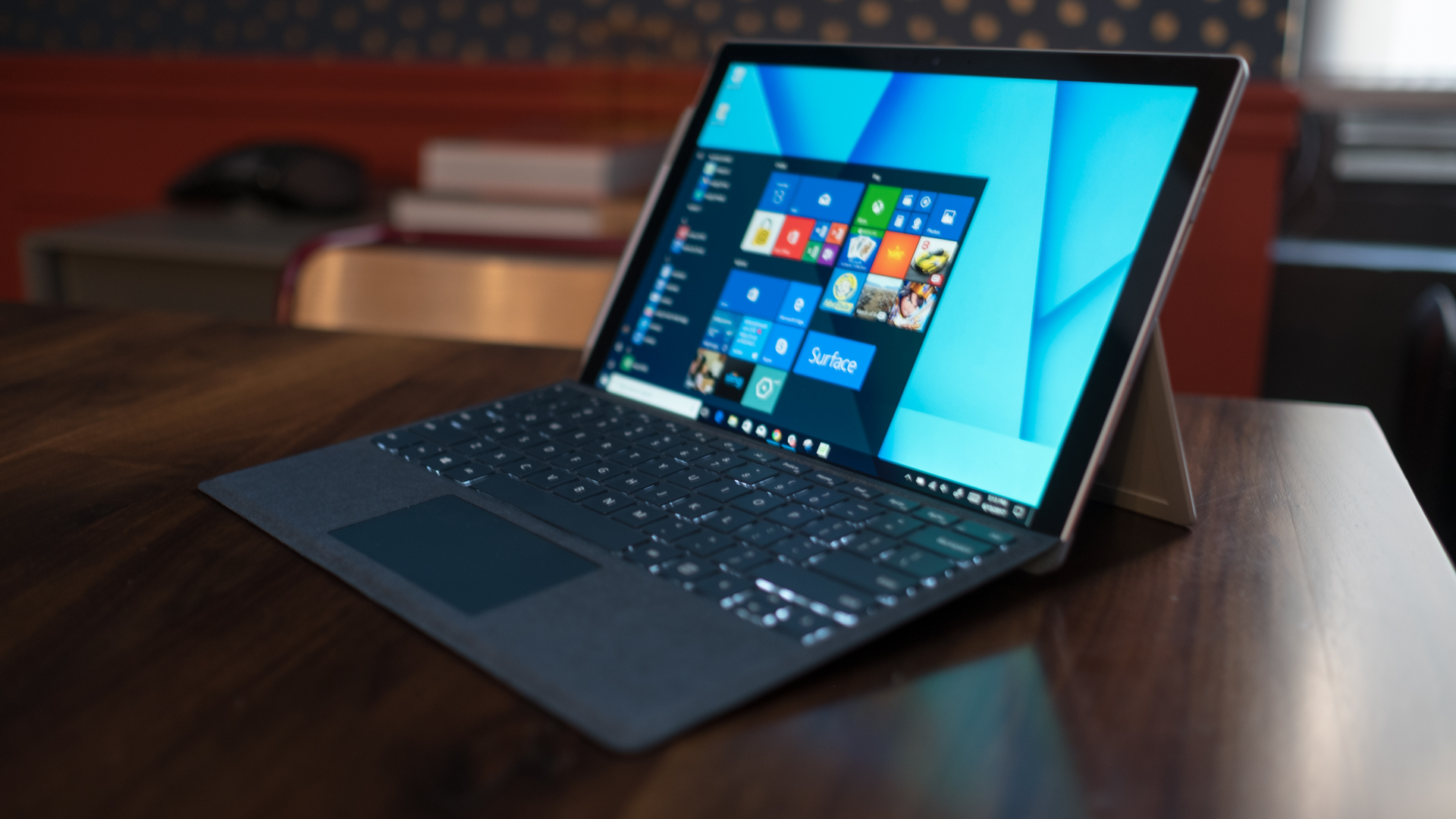
Final verdict
The degree of how much improved the Surface Pro 5 is over its predecessor and how it keeps its lead over rival 2-in-1 laptops or tablets is not totally surprising. Still, it is more than worth talking about. From the accessories meant to make the Surface Pro 2017 feel even more of a worthy laptop alternative, to its longer battery life, every one of our past concerns have been addressed.
Sadly, Microsoft has decreased the Surface Pro’s value proposition by taking out vital parts of the deal. It made its case weaker, instead of stronger, for example, by pulling the new Surface Pen from every box. It’s not a very customer-friendly move, and it only makes deciding whether or not to purchase it harder for potential buyers who might be considering the device.
If you’re willing to drop a little more silver for its latest accessories, the new Surface Pro is still the ultimate 2-in-1 laptop and productivity tablet. So much so that, in spite of Microsoft’s decision to pull the Surface Pen from the box, it still earns our Recommended accolade.
0 comments:
Post a Comment